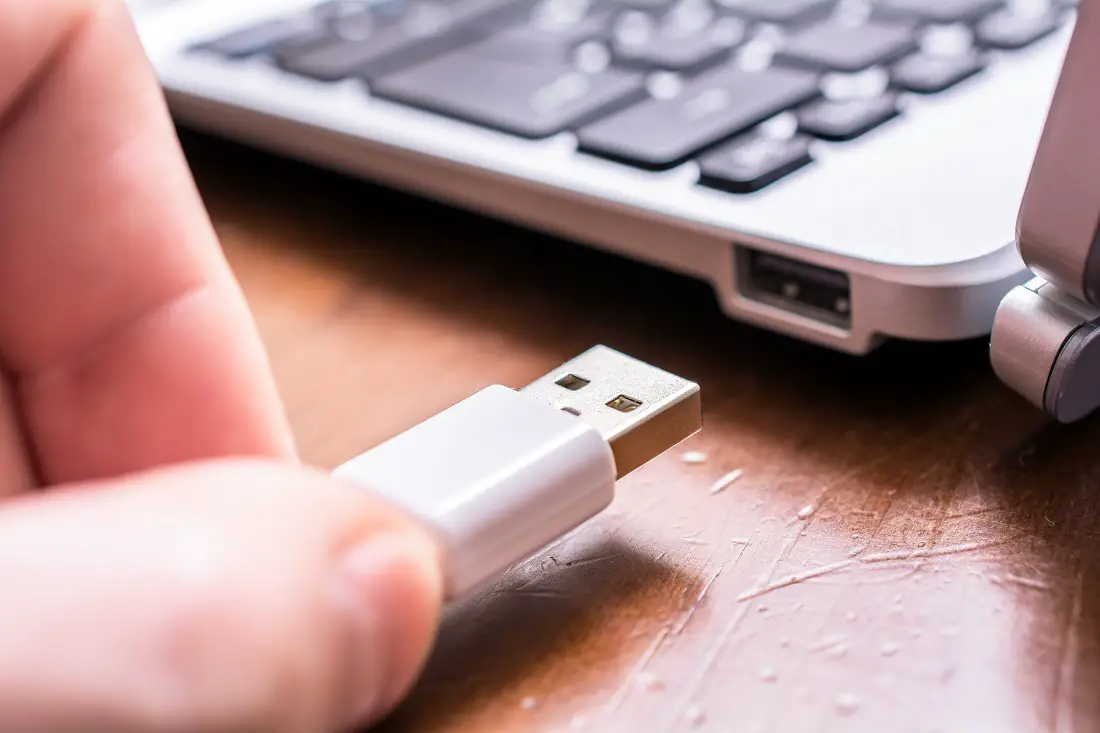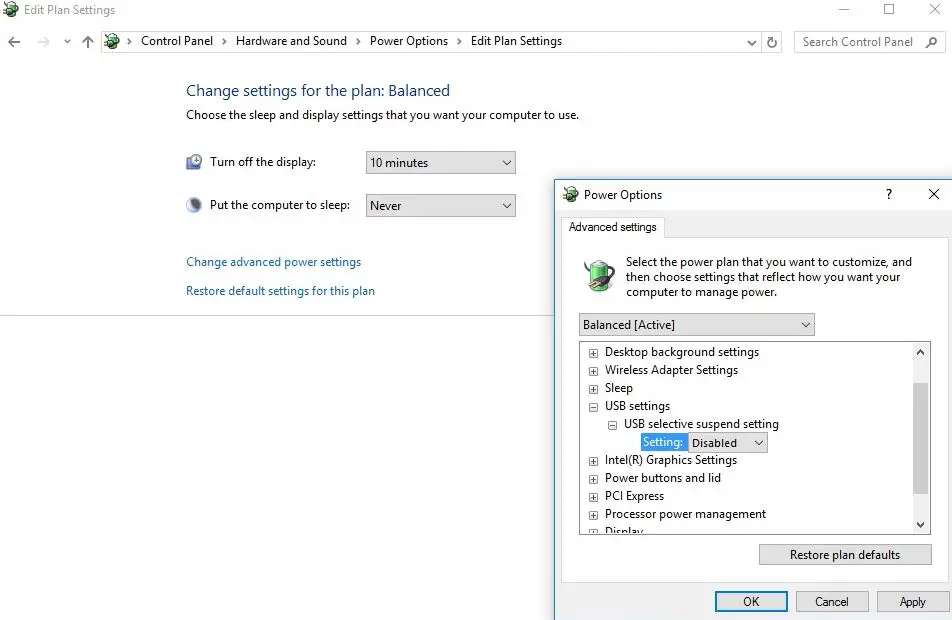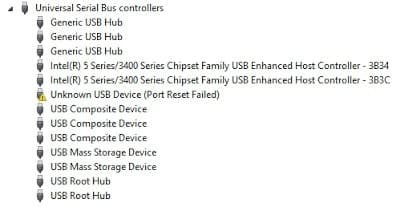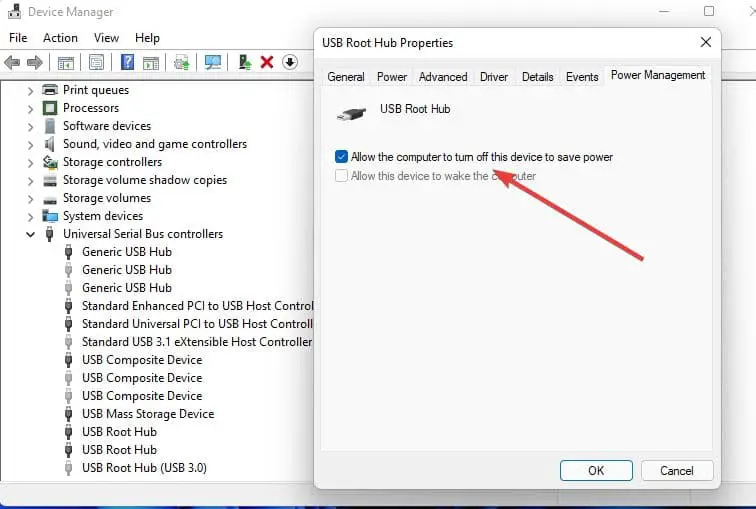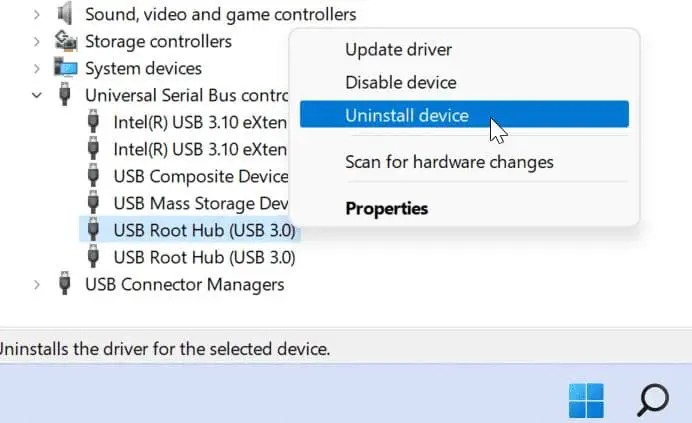The USB (Universal Serial Bus) is a versatile and widely used interface that enables seamless connectivity and data transfer between devices. You can connect USB HDD or flash drive on Windows 11 PC for data transfer between devices, Also USB ports are used to connect peripherals like keyboards, mice, Game controllers, and webcams to a computer. But sometimes you may get “USB Device Not Recognized” error with code 43 in Windows 11.
The full message would be like :
USB Device Not Recognized,
The last USB device you connected to this computer malfunctioned and Windows does not recognize it.
This error usually indicates that the USB device has malfunctioned, and Windows has stopped it to prevent further damage. Several possible reasons include outdated or faulty drivers or certain power management settings, and Faulty or incompatible USB ports cause Windows 11 not recognizing USB drives. This article, explores detailed solutions to fix USB device not recognized on Windows 11 (Error code 43) and regain the functionality of your USB devices.
How to Fix USB Device Not Recognized Windows 11
Before delving into advanced solutions, it’s essential to start with basic troubleshooting steps to rule out any minor issues.
Let’s first Disconnect the USB device from your computer and Plug it into a different USB port.
In addition, restart Windows 11 to wipe up system memory, restart the running process and resolve temporary glitches that may be causing Windows 11 not recognizing USB drives.
Dust and other elements may clog up your USB port which may cause USB device not being able to interact with the device. Let’s clean it and reconnect the USB device again.
Also If possible, connect the USB device to a different computer to check if it’s recognized. If it is, the problem may be specific to your computer’s configuration and need to fix following steps below.
Disable USB Selective Suspend Setting
Disabling the USB Selective Suspend feature help number of users to fix the issues with device recognition. Let’s first disable this option, which may resolve the USB Device Not Recognized error for you as well.
- Press the Windows key + S type edit power plan in the search box and select it from results,
- Next, click the Change Advanced Power Settings link to open the power options window,
- Locate and expand the USB settings then USB selective suspend settings option
- Select Disabled for both the “On battery” and “Plugged in”options on the Setting drop-down menu.
- Click apply then OK to save changes and reboot your computer,
- Now connect the USB device and check if the USB device is recognized without the error.
Uninstall the Unknown USB device
Sometimes Outdated or incompatible drivers could be the reason why Windows 11 not recognize USB drives. Let’s open Device Manager and remove the unknown USB devices and force install the committable driver for that.
- Press Windows key + X and select Device Manager,
- This will display all devices and peripherals connected to the computer
- Now expand Universal Serial Bus controllers, Attach your device which is not recognized.
- You will see an Unknown USB device (Port reset failed) with a yellow sign in Universal Serial Bus controllers.
- Now right-click on it and click Uninstall to remove them and restart your PC,
- The required drivers are automatically reinstalled after the restart. That’s it.
Update USB Drivers
Another thing you can do is ensure that your USB drivers are up to date.
Outdated or corrupted USB drivers can cause various USB-related errors, including code 43.
To update your USB drivers, follow these steps:
- Press Win + X on your keyboard and select “Device Manager” from the menu.
- Expand the “Universal Serial Bus controllers” category.
- Right-click on each USB device listed and select “Update driver.”
- Choose the option to search automatically for updated driver software. Windows will search and install the latest drivers for your USB devices.
- Restart your computer and check if the error is resolved.
Change USB Power Management Setting
Also, Power Management would also be the cause of USB problems. Uncheck Turn off the Allow the computer to turn off this device to save power option will also fix this issue.
- Press Windows key + X and select Device Manager,
- Expand the Universal Serial Bus controllers branch option
- Double-click the USB Root Hub device to open properties and click the Power Management tab.
- Here uncheck “Allow the computer to turn off this device to save power” option, and click OK button.
- Once Restart the windows and check this trick may work for you.
Reinstall USB Controllers
If updating the drivers did not resolve the issue, reinstalling the USB controllers might help. Here’s how you can do it:
- Open the Device Manager and expand the “Universal Serial Bus Controllers” category.
- Right-click on each USB device and select “Uninstall device.”
- Confirm the action by clicking “Uninstall” again.
- After uninstalling all USB devices, click on the “Action” menu and select “Scan for hardware changes.”
- Windows will automatically reinstall the USB controllers.
- Restart your computer and check if the USB device is now recognized without the error.
If the above solutions didn’t fix the problem you need to check your Windows 11 installation isn’t corrupted. Run the SFC and DISM tools to check your local drive for corrupted system files and replace them.
- Open command prompt as administrator
- First run command DISM /Online /Cleanup-Image /RestoreHealth
- Next, run the command sfc /scannow When the scans are complete, restart your PC and see if the USB device is working again
Microsoft regularly releases hotfixes to patch critical issues, Check for and install the latest Windows updates that may have bugs for this issue. Also, you can try performing a system restore to a point when your USB devices were functioning correctly
Frequently Asked Questions (FAQs)
What does “USB Device Not Recognized” mean?
- This message indicates that the computer is not able to identify a connected USB device.
Why am I getting the “USB Device Not Recognized” error?
- This can happen due to various reasons, including faulty USB ports, outdated drivers, or issues with the connected device itself.
How can I troubleshoot a “USB Device Not Recognized” error?
- Start by trying the affected device on different USB ports, checking for loose connections, updating USB drivers, and using the device on another computer if possible.
What if the USB device works on another computer but not on mine?
- This suggests that the issue might be specific to your computer’s USB ports or drivers. Try updating the USB drivers or checking for hardware problems.
Could a faulty USB cable be causing this error?
- Yes, a damaged or incompatible USB cable can lead to this error. Try using a different cable to see if that resolves the issue.
Are there specific settings I should check for this error?
- You can start by checking the USB controllers in the Device Manager to ensure they are working properly and up to date.
Also read:
